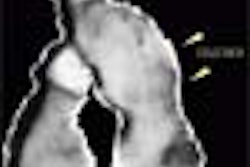A California start-up is launching a new ultrasound probe technology that uses silicon-based transducers rather than the piezoelectric crystal-based probes that are currently the industry standard. The company, called Sensant, is unveiling the transducers at this week’s World Federation for Ultrasound in Medicine and Biology meeting in Montreal, Canada.
Sensant of San Leandro, CA, calls its technology Silicon Ultrasound, and claims that the new transducers are capable of capturing more diagnostic information that could result in ultrasound being used for applications traditionally reserved for CT and MRI. The technology is based on work conducted at California's Stanford University on capacitive microfabricated ultrasonic transducers (cMUTs).
The cMUTs resemble tiny silicon drums, each smaller than the width of a human hair, that are fabricated on a silicon wafer and incorporated into the transducer. Sensant claims that this design gives Silicon Ultrasound transducers a superior acoustic response that forms the basis for better medical images.
For example, Sensant claims that its images of carotid anatomy clearly depict the intima layer of the lumen, potentially enabling the visualization of early indications of cardiovascular disease and stroke. The company believes that Silicon Ultrasound will enable the development of new designs for 3-D ultrasound scanners, and will also demonstrate benefits in contrast imaging.
At WFUMB, Sensant is showing the first Silicon Ultrasound images taken in a clinical setting, acquired from an Italian hospital in collaboration with ultrasound scanner vendor Esaote of Genoa. The company is showing cardiac, breast, and musculoskeletal images.
By AuntMinnie.com staff writersJune 3, 2003
Copyright © 2003 AuntMinnie.com



















